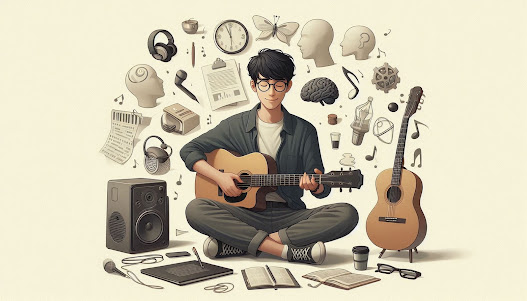Overview
- Organization is a must for creativity
- Create a very simple file system
- Create schedule with short time frames
- Make everything as simple as possible
- Limit the amount of items daily
- Write down everything
- Make a time to organize notes only
- Make a separate time to analyze notes
- Make a separate time to plan and review
The Undeniable Truth: Organization Fuels Creativity
- Capture fleeting inspiration: When ideas strike, you need a system to grab them before they vanish like morning mist.
- Find and build upon past work: Imagine effortlessly accessing that half-finished project or that insightful note from weeks ago. Organization allows you to connect the dots and build on your creative journey.
- Reduce mental clutter: Less time spent searching and remembering means more mental space for generating new and exciting ideas.
- Meet deadlines (gasp!): Even creative pursuits sometimes have timelines. A touch of organization can help you bring your visions to fruition.
1. The "Bare Bones" File System:
- Forget elaborate categories and nested folders. Let's keep it ridiculously simple, whether digital or physical:
- "Current Projects": Anything you're actively working on right now.
- "Ideas & Inspiration": Sketches, notes, articles, anything that sparks your creativity.
- "Completed Works": Finished projects, ready to be shared or archived.
- "Reference": Essential documents, resources you frequently need.
2. Tiny Time Blocks for Tasks:
The idea of a full-day schedule might make you twitch. Let's break it down into bite-sized chunks:- 15-30 minute bursts: Focus on one small task at a time. "15 minutes of tidying my desk," "20 minutes of outlining that blog post." Short, manageable, and less overwhelming.
- Theme your blocks (loosely): Instead of "9:00 - 9:30 AM: Emails," try "Morning Spark: Quick Admin Tasks."
3. Keep It Stupid Simple (KISS):
Overcomplicating is the enemy of getting organized, especially for those of us who lean towards the spontaneous.- One home for everything: Assign a specific spot for frequently used items. "My favorite pens live in this jar." "All my sketchbooks go on this shelf."
- Visual cues: Use clear containers, labels (if you dare!), or even just the visual of items grouped together to make it easy to see where things belong.
4. The Daily Item Limit (Gentle Edition):
Resist the urge to start ten new things in one day.- Choose 1-3 key tasks: Identify the most important things you want to accomplish creatively each day. Focus on those before letting your inspiration wander too wildly. This helps prevent the feeling of being constantly scattered.
5. The Power of Writing It Down (All of It!):
Your brain is for creating, not remembering endless details.- Carry a notebook or use a voice recorder/notes app: Capture every idea, to-do, or random thought the moment it strikes. Don't trust your memory!
Dedicated Time for Deeper Thinking:
- Note Tidy Time (15-20 minutes, 2-3 times a week): This isn't about analyzing, just organizing your raw notes. Transfer scribbles to a digital document, categorize loose papers into your simple file system, or transcribe voice notes.
- Note Analysis Time (30 minutes, once or twice a week): Now you dive deeper. Look for connections, extract key insights, and see if any patterns or new ideas emerge from your collected notes.
- Plan & Review Time (30-60 minutes, once a week): Look at your upcoming week. What projects do you want to focus on? Review your analyzed notes for potential next steps. This is about setting a general direction, not a rigid itinerary.
This isn't about becoming a different person. It's about creating little pockets of order that allow your magnificent creative energy to flow more freely, leading to even more amazing things.



No comments:
Post a Comment